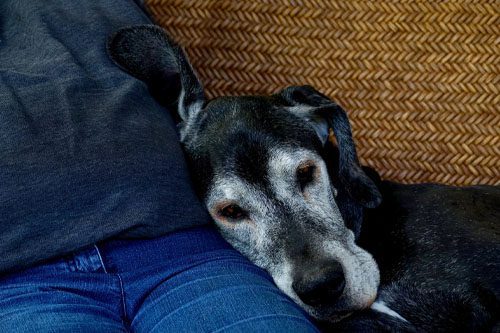How to take care of an elderly dog?


When the dog ages, his needs change: food, exercises, health, many parameters must be taken into account and monitored in order to provide him with maximum comfort, love and attention during the last years he will share. with us. Should you eliminate your activities or just reduce them?
How to arrange his environment when the dog becomes blind or communicate if his hearing is weak? Should we change our diet? How do we recognize that our doggie has aged and is no longer the dashing companion of the first years?
How do I know my dog is old?
Depending on his race, entering old age does not happen at the same time. Moreover, just like us, some show little or no signs of aging or much later. Depending on the size and weight of your pet, the age that brings dull hair and loss of autonomy (or not) is not the same. In large breed dogs, they are considered old as early as their 10th year. For the medium-sized animal, it will be rather 11 years old and for the smaller breeds, around 14 or 15 years old. However, some large dogs show signs of aging around the age of 6, others much later. There are, however, signs that betray their advance into middle age:
Psychological signs can also occur in older dogs, such as depression or senility. It is therefore our duty to observe his reactions in order to provide him with the daily care that will allow him to live his age well.
What activities for the older dog?
Although your animal tires more quickly, cutting out walks and playtime is still a bad idea. Even when he is in pain, your pooch needs to go for walks to exercise his senses and maintain a quality lifestyle. Stimulating your dog allows him to age less quickly, even if he suffers from age-related syndromes like old-dog osteoarthritis.
A degenerative disease, chronic degenerative arthropathy gradually destroys the cartilage, causing pain and difficulty in moving. However, the less your dog moves, the more the cartilage breaks down. Offering him walks adapted to his pain and handicap preserves the cartilage present. They also allow your dog to work on his nose, an activity essential to his psychological balance. You can offer him shorter walks more often and games that won’t cause undue pain.
Don’t force him to pick up the pace if he can’t, respect his pace. In order to relieve your loulou, think of the massage. Make an appointment with an osteopath, he will tell you the gestures that will relieve him.
Arrange your environment
The senior dog will need much more quiet time to rest than the puppy. If your pet previously liked to sleep on the floor, a basket or a comfortable cushion where it will be easy to lie down. If he suffers from osteoarthritis, install him in a warm place in the house, near a radiator for example, or offer him an electric blanket that will relieve his pain.
If he used to sleep next to you, upstairs, you may need to change his sleeping location so that he does not suffer when going up or down the stairs. Likewise, invest in a board to allow him to climb into the trunk of the car effortlessly, or carry him around. If getting to his bowls becomes difficult, it will be necessary to bring them closer to his sleeping place.
Aging can lead to deafness and/or blindness in older animals. If your dog becomes blind or sees very badly, you will have to ensure his safety on a daily basis. Forget the new interior design you were planning and walk it on a leash even if it was not your habit.
Finally, talk to him softly before approaching him so as not to startle or frighten him. Likewise, if his aging is accompanied by deafness, you will have to be careful not to scare him or pet him in his sleep.






